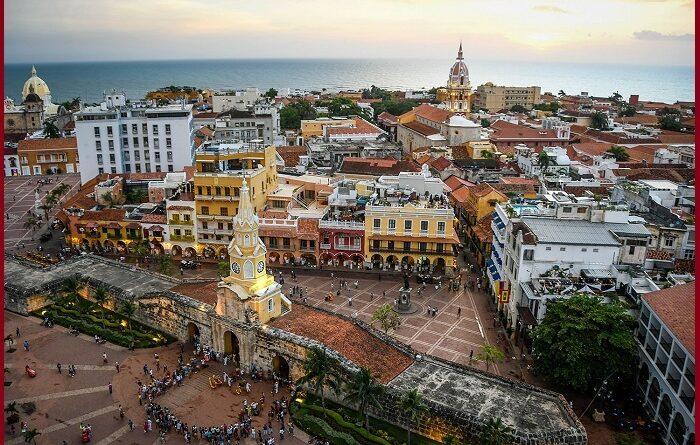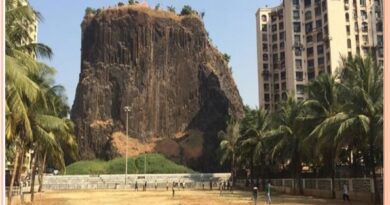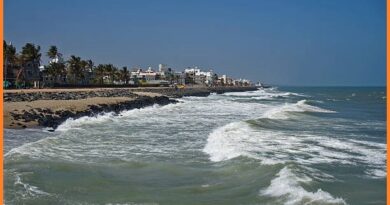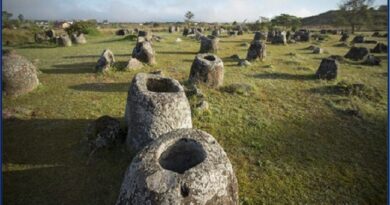Cartagena Colombia-A gorgeous village on the Caribbean coast
Cartagena Colombia
Cartagena de Indias or Cartagena is a historic city on the Caribbean coast. It is superbly preserved within an impressive 13 km of centuries-old colonial stone walls. Cartagena’s Old Town is a Unesco World Heritage Site. Cartagena is a maze of cobbled alleys, balconies covered in bougainvillea, and massive churches that cast their shadows across leafy plazas. This is a place where one can stroll through the Old Town day and night. Soaking up the atmosphere, and pausing the brutal heat and humidity in one of the city’s many excellent bars and restaurants is the best way to enjoy in the city. Cartagena is known as a gorgeous fishing village on the Caribbean coast, with excellent beaches, a historic old town, and beautiful colonial architecture. It is the safest place in the country and a popular port for cruise ships. During walking and exploring the cobblestone streets, one can Stop at an outdoor cafe for excellent pastries and people-watching.
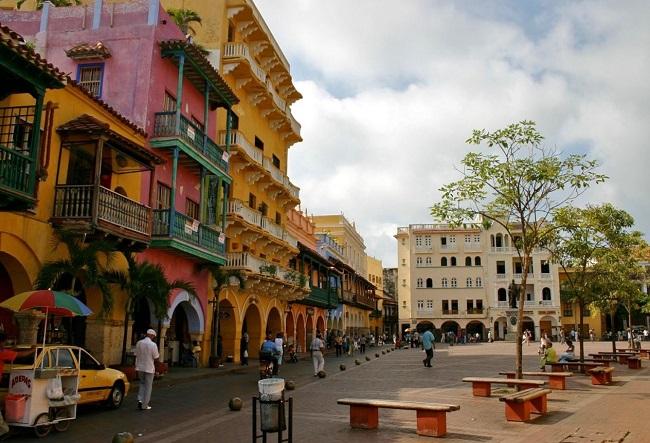
One of South America’s oldest colonial cities, Cartagena was founded in 1533, its wealth was built on slavery, sugar, and gold. More than 11 km of walls and ramparts surround the Old City, now a charming UNESCO World Heritage site. Holding its own against Brazil’s Ouro Preto and Peru’s Cuzco for the continent’s most enthralling and impressively preserved historic city, Cartagena is hard to forget.
Geography and Geology
Cartagena is located to the north of Colombia and faces the Caribbean Sea to the west. To the south is Cartagena Bay, which has two entrances: Bocachica (Small Mouth) in the south, and Bocagrande (Big Mouth) in the north. Its coastal line is characterized morphologically by dissipative beaches. Cartagena bay makes an estuary with an area of approximately 84 km2.
Most of the emerging territory of Colombia covers vast areas within the South American plate, whereas much-submerged territory lies within the Caribbean plate and the Nazca plate. A combination of external and internal tectonic, volcanic, and glacial forces over the eons formed Colombia’s present-day geology. The Metamorphic rock was exposed to Paleozoic Era, which began 539 million years ago. Large layers of sedimentary rock were deposited during the Jurassic Period, which ended with great igneous activity. During the Cenozoic Era, which began about 66 million years ago, enormous granite masses formed along the Cordillera Occidental.

History of Cartagena, Colombia
The colonial city of Cartagena is located on the north Caribbean coast of Colombia. It is a city and one of the major ports in the Caribbean Coast Region, bordering the Caribbean sea. The old walled city remains as do the ancient fortresses, including the Spanish-built Castillo de San Felipe de Barajas. Cartagena’s link in the route to West Indies provides it with important historical sites as commercial maritime routes. It was a Spanish colony and a key port for the export of Bolivian silver to Spain and for the import of enslaved Africans under the asiento system. Modern Cartagena is the capital of the Bolívar Department. It is the second-largest city in the Caribbean region, after Barranquilla, and the fifth-largest city in Colombia. Economic activities include the maritime and petrochemical industries, as well as tourism. In 1984, Cartagena’s colonial walled city and fortress were designated a UNESCO World Heritage Site.
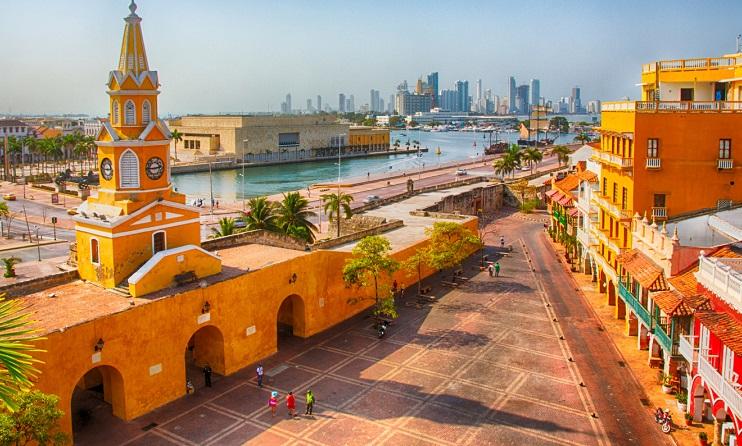
Research believes humans have lived in the region since around 4,000BCE, the earliest known inhabitants are called the Puerto Hormiga culture. They were later replaced by the Sinu society, which derived from the Karib, Malibu, and Arawak language families. These tribes survived until European colonization many centuries later.
The city of Cartagena was founded on 1 June 1533 by Spanish commander Pedro de Heredia, who took a Caribbean village known as Calamarí and started building a settlement of his own. The first Spanish settlers were sailors who arrived from Cartagena in Spain to start a new life. They established the town as Cartagena de Indias in reference to the Spanish counterpart. In 1811, Cartagena has declared independence from Spain.
Attraction in Cartagena
Old Town
Cartagena’s old city is the main tourist attraction, particularly the inner walled town, consisting of the historical districts of El Centro and San Diego. It’s one of the finest examples of preserved colonial architecture in the Americas. The place is full of churches, monasteries, plazas, palaces, and mansions with their famous overhanging balconies. The best way to experience the Old Town is to wander in a leisurely fashion and explore architectural details, street life, and local snacks along the way.

Castillo de San Felipe de Barajas
The Castillo de San Felipe de Barajas is the greatest fortress built by the Spanish. The structure still dominates an entire section of Cartagena’s cityscape. It should definitely be the first fortress you visit. the Fort is situated on top of the 40m-high San Lázaro hill. In 1762 an extensive enlargement was undertaken, that cover the entire hill with this powerful bastion. The fort was a complex system of tunnels connected to strategic points to allow provisions to be distributed and to facilitate evacuation. The fortress is a short walk over the bridge from Getsemaní.
Read more- A Buddhist Monuments and Cultural Landscape-Chiang Mai Thailand
Convento de la Popa
Convento de la Popa On a 150 m-high hill is the highest point in Cartagena. The place is the best viewing spot that stretches all over the city. Founded in 1607, it was initially just a small wooden chapel, but when the hill was fortified two centuries later it was replaced by a beautiful construction. There’s a zigzagging access road leading up to the convent which is located 3km outside the old city walls.
Things to do in Cartagena Colombia
Bus Tours in Cartagena
Hop-On, Hop-Off Cartagena Bus Tour is an Amazing experience in Cartagena. Visitors can explore the city for either 24 or 48 hours, depending on preference. Make the most of your Cartagena sightseeing trip by taking advantage of the free, guided walking tour of the Walled City. During your Cartagena vacation, you can pick and choose the Cartagena points of interest that you want to see. Some of the best Cartagena attractions are Torre del Reloj, Museo Rafael Nuñez, Casino Rio, and others.
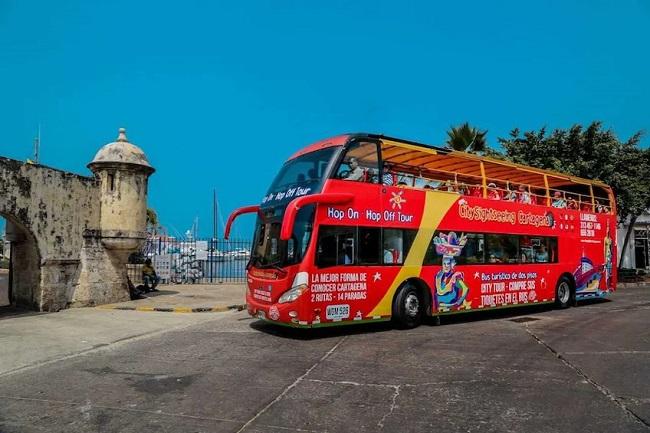
Nature and wildlife tour
Totumo Mud Volcano is a major attraction in Cartagena and swimming in this mud is the best thing to do in Cartagena. It is Mineral-infused mud that’s reputed to have healing properties. Visitors can take ample time to soak in the mud bath, with a stop at Manzanillo Beach. Enjoy the Totumo Mud Volcano, which is a lifetime experience. Be amazed by nature’s unpredictability on this Totumo Volcano and Galerazamba. The impressive Galerazamba salt flats give a pink hue to the nearby sea between December and April. Its magnificent views of the pink sea from a lookout point is an awesome scenery.
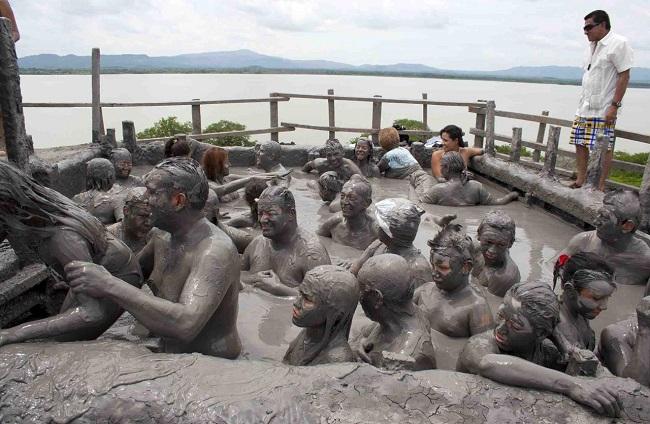
Cartagena Colombia Beaches
Colombia’s Rosario Islands is the best beach to relax on the coral white sand and in the clear water. It Includes a gourmet Caribbean-style lunch and this is the best thing to do in Cartagena. Bora Bora Beach Club is the best place to take on hands some water sports like-Paddleboards and kayaks. The Rosario Islands is also famous for beach and snorkeling excursions. visitors here find natural coral pools and white sand beaches. The tour will end with a visit to Baru Island, known for its bioluminescent plankton before returning to Cartagena.
When to Visit Cartagena Colombia
Cartagena is best to visit especially in December and January when Colombia’s summer is at its high. During this time balconies and windows are alive with tropical flowers. Music fills the streets and other Afro-Caribbean sounds, giving an island-like feel. Rich with history and cultural attractions, the city is also the best winter vacation spot.
The hot dry season is perfect for boating and wandering the cobblestone streets with little fear of rain. Cartagena is located en route to the Panama Canal, so yachts from all over the world stop off there before transiting the canal, which makes this spot the best boat scene.
How to reach Cartagena
The nearest International airport to Cartagena is Rafael Nunez, nearly 4.5 km from downtown. There is a flight daily from Miami to Cartagena. One can also reach here from New York. The city has frequent White and Green metro-car buses which go to the old city. The buses connect to almost all the cities.
Sources- Lonelyplanet.com, Wikipedia.org, Advisors.com
